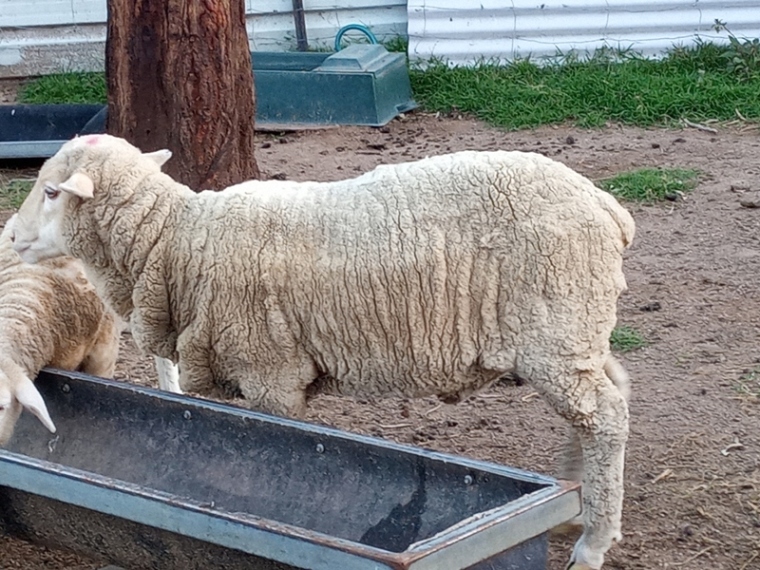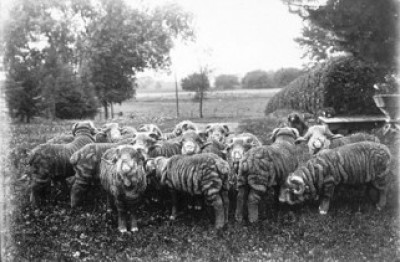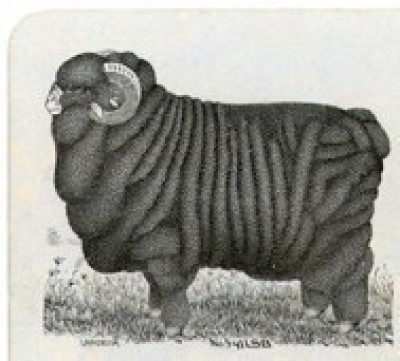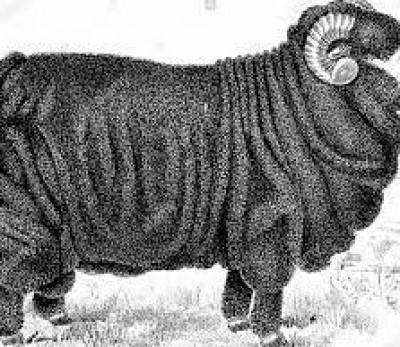
The Vermont (USA) rams devastated the Australian wool industry when introduced in the 1880s and the effects are still being felt 140 years later.
The breeders in Vermont bred their sheep to produce more wool by increasing the number of wrinkles in the skin. They believed their sheep, which were cutting more weight than the Australian merinos, would advance the wool industry here so, in the 1880s, 12 of the so-called ‘Vermont rams’ arrived in Australia.

Fleece weights were important
Since many Australian stud men were talked into believing these sheep would improve wool weights, their use spread rapidly, urged on by the Vermont breeders who thought they were the saviours of the Australian industry.
Yes, the Vermont sheep cut higher fleece weights but the clean yield was low. The greater grease content brought about more flystrike, the wool was shorter in staple length and uneven, with lower lambing percentages.
Devastation
Their introduction had a devastating effect on many famous fine-wool studs and many of the stud masters were slow to see the disadvantages of the breed, still believing wrinkly sheep would turn out to be the best option because of their greater fleece weight.
The average wool producers throughout Australia soon saw the problems with increasing flystrike, less money for their wool and fewer lambs.
The problem then, in changing back to clean-bodied sheep, was their inability to buy suitable rams. The industry was ‘swamped’ by wrinkly sheep.
Clean-bodied sheep are better
Ever since the early 20th century, wool producers have struggled to decrease the number of wrinkles on the bodies of their sheep with varying degrees of success.
Even into the 1950s and 60s, some stud masters still believed wrinkly sheep produced more wool and would not change but by the 1970s, even the most ardent believers in wrinkly sheep had ‘seen the light’ and altered their breeding priorities.
Up until the Vermont sheep arrived in Australia, the wool industry was progressing at a frenetic pace with the wool clip considered to be the best in the world, fetching prices in England and Europe from woollen mills no other wool could achieve.
It was fine, had a long staple length and good strength, stretch and elasticity, was clean, bright and soft.

German breeders started the Merino trend
The Merino breed now so famous in Australia and New Zealand had its beginnings in the 16th century when German breeders crossed Spanish merinos with Saxon sheep in order to produce a dense, fine style type of wool from sheep adapted to their environment.
This breed had been imported into South Africa and as it was closer and less costly than bringing sheep from Europe, these were what John MacArthur, Governor King and others chose to import to Australia.
The industry progressed at an enormous pace once the Great Divide was crossed in the 1820s.
Soon there were millions
The Australian climate was so good for wool production, there were nearly two million sheep in Australia by 1830 and by 1836, Australia had won the wool trade war with Germany. Manufacturers there started importing Australian wool in 1845.
Other breeders entered the industry over the next few decades, the most influential being Eliza and John Furlong, John Murray and the Peppin brothers who introduced Rambouille blood lines, perhaps the most significant improvement in the Australian merino breed.
These merinos were fast becoming known as growing the finest wool and much effort was made by breeders to increase the size of the sheep, increase the yield and then make the wool finer. They had clean bodies without wrinkles and could cut up to 5 pounds (approx. 2kg) of wool (it is not unusual for the modern merino to cut 7kg of wool).

So, where did these Vermont sheep originate?
Similar sheep to the German breed were introduced into America in 1802 and by 1835, Vermont had over one million sheep and adjoining states had similar numbers. In order to beat off their competition, the breeders in Vermont selectively bred their sheep to increase the fleece weight and so came about the Vermont style of sheep with their whole body covered in wrinkles.
‘Wrinkly’ is bound for the butcher
I was recently given a wrinkly lamb by a breeder who wanted nothing to do with it. It was a strong ‘throwback’ to the Vermont sheep and demonstrates how the wool industry in Australia still suffers from decisions made all those years ago and stud breeders’ unwillingness to admit they were wrong.
No chance this lamb will breed on, he’s destined for the butcher shop but his type still appear irregularly in flocks across the country. I know personally how shearers dislike this type of sheep.
In our Christian walk too, we can be led astray by teachings which sound good at the time but eventually lead to destabilisation and then devastation.
The Answer? Know your Bible.

John Skinner served as an infantry soldier in Vietnam then the Tasmanian Police before taking up the position of CEO of the Australian Rough Riders Association (professional rodeo based in Warwick Qld). Before retirement to his small farm, he was a photo-journalist for 25 years. He is married with 3 children and 7 grandchildren.